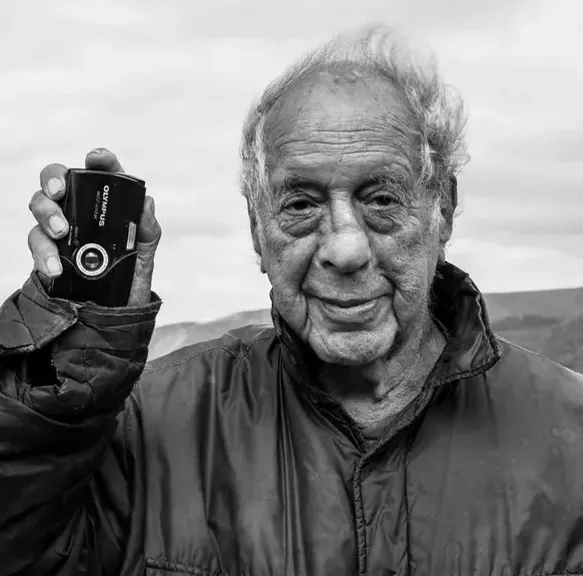
Robert Frank
Robert Frank, a visionary artist whose work seamlessly blended photography and film, is widely acknowledged as a defining figure of 20th-century art.
Biography of Robert Frank
Born in Zürich, Switzerland, in 1924, Robert Frank relocated to the United States in 1947. Upon settling in New York City, he immersed himself in the dynamic world of fashion photography, honing his craft as a staff photographer for Harper's Bazaar.
Recognizing his burgeoning talent, Walter Laubli, editor of Camera magazine, featured Frank prominently in a 1949 portfolio alongside Jakob Tuggener, positioning them as leading lights of Switzerland's "new photography" movement.
Following his stint in New York, Frank embarked on a journey through South America and Europe. His Peruvian photographs were even compiled into a handmade book.
Returning to the United States in 1950, Frank's career trajectory took a decisive turn. A pivotal encounter with influential photographer and curator Edward Steichen opened doors, leading to an exhibition of his work at the prestigious Museum of Modern Art (MoMA).
Frank's restless spirit continued to drive him to explore new territories. Upon returning to New York in 1953, he transitioned into freelance photojournalism. His distinctive vision quickly caught the eye of leading publications like McCall's, Vogue, and Fortune, which sought to harness his ability to capture the essence of a story in a single frame.
A pivotal moment arrived in 1955 when his work was featured prominently in the Museum of Modern Art’s groundbreaking exhibition, "The Family of Man." This platform elevated his status in the photographic world and solidified his reputation as a visionary artist.
In 1961, Robert Frank achieved a career pinnacle with his first solo exhibition, "Robert Frank: Photographer," at the esteemed Art Institute of Chicago. This landmark showcase provided a comprehensive platform to display his groundbreaking work and introduce his singular vision to a wider audience.
Frank's work has been celebrated on a global scale, with exhibitions in prestigious museums and galleries worldwide. His photographs are housed in renowned public collections such as the Museum of Modern Art in New York and the National Gallery of Art in Washington, D.C.
Lauded for his groundbreaking contributions, the artist received numerous accolades throughout his career, including the prestigious Hasselblad Foundation International Award in Photography.
Robert Frank passed away in 2019, leaving behind an extraordinary body of work that continues to inspire and resonate. His uncompromising vision and dedication to capturing the human experience have solidified his status as a pivotal figure in the history of photography.
Robert Frank's Famous Works
Robert Frank is celebrated as a pioneering figure in photography and film. His iconic book, The Americans, a collection of candid images captured during his travels across the United States in the mid-1950s, redefined documentary photography.
In 1972, he published "The Lines of My Hand," a deeply personal photographic exploration considered a 'visual autobiography.' His talents as a filmmaker were equally impressive, with the documentary "Cocksucker Blues" (1972) on the Rolling Stones standing as a testament to his innovative approach.
Known for his experimental style, Frank employed techniques like cropping and blurring to imbue his photographs with a sense of spontaneity and movement. His influential body of work includes iconic series such as "London" and "Indianapolis," as well as the renowned portrait of Willem de Kooning.
Years:
Born in 1924
Country:
Switzerland, Zürich
Gallery: